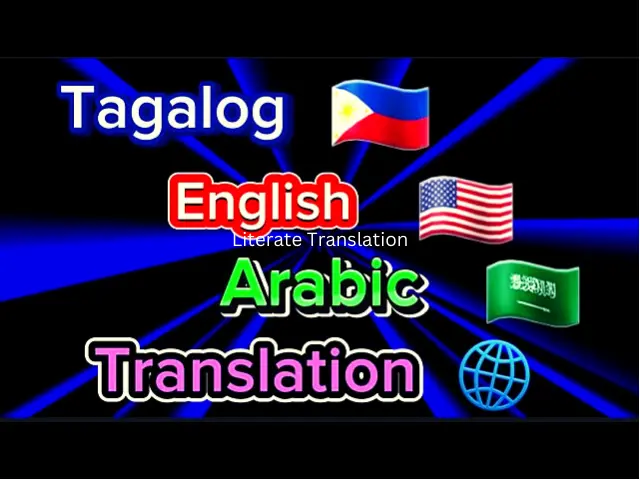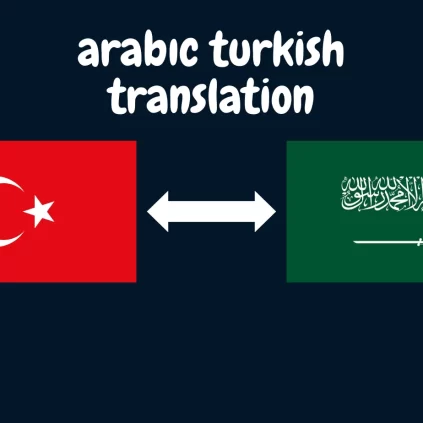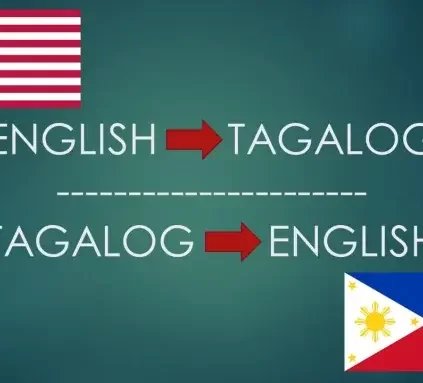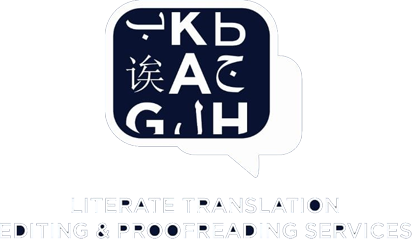In our increasingly interconnected world, overcoming language hurdles has become essential to building meaningful relationships. The need for trustworthy translation services and the desire for seamless communication grows. To bridge the gap between two rich and diverse worlds, we explore the complexities of language and culture as we delve into the complex art of Translate Tagalog to Arabic in this article.
Comprehending the Linguistic Environment:
Understanding the linguistic environments of Arabic and Tagalog is essential before we start the translation process. The official language of the Philippines, Tagalog, is complete with nuanced cultural and historical information. However, Arabic, a language of enormous importance in the Middle East and North Africa, has a sophisticated structure.
The Difficulty of Arabic to Tagalog Translation:
The difficulties in translating from Tagalog to Arabic stem from the linguistic and cultural distinctions inherent in each language. With its Semitic origins, Arabic utilizes the Arabic alphabet, while Tagalog, with its Austronesian roots, uses the Latin script. It is essential to comprehend both languages’ distinct grammatical structures and idioms to provide precise and culturally aware translations. Our Company also offers Professional translation services in Dubai.
Essential Things to Keep in Mind for Good Translation:
1. Cultural Sensitivity: It is crucial to be mindful of cultural differences when translate Tagalog to Arabic. It is imperative to honor both cultures’ unique customs, principles, and social conventions. A competent translator is a language expert and has a profound awareness of the cultural backgrounds in which each language is rooted.
2. language subtleties: Translation is difficult since Arabic and Tagalog each have unique language subtleties. Arabic uses a root-based system, whereas Tagalog is known for using affixes to convey multiple meanings. A skilled translator must handle these language nuances to ensure the translated information is accurate and coherent.
3. Contextual Awareness: Context is critical when translating from Tagalog to Arabic. Translations meaningful to the target audience require a detailed understanding of the context, as words and expressions might have distinct meanings in different languages.
Technology’s Place in Translation
In the digital age, technology is essential to the translation process. Tools for machine translation (MT), such as Google Translate, are now widely available. Even though these tools can give a brief synopsis of the text, additional skill is frequently needed for subtle translation Services, mainly when working with languages as different as Arabic and Tagalog.
Human Elements in Interpretation:
Even with machine translation advances, producing translations of the highest caliber still requires the indispensable human touch. The contributions of a human translator include contextual understanding, cultural sensitivity, and language proficiency. This is especially important when translating text that calls for a thorough comprehension of the subtle cultural differences between languages like Arabic and Tagalog.
How to Effectively Translate Tagalog to Arabic:
1. Collect Contextual Information: Try getting as much context as possible before starting the translation process. Recognize the content’s goal, the intended audience, and any cultural quirks that might affect the translation.
2. Determine Important Cultural Terms: Arabic and Tagalog are two languages closely related to their respective cultures. To guarantee that the translation preserves cultural authenticity and resonance, note important terminology and idioms from the target culture.
3. Preserve Simplicity and Clarity: A translation’s effectiveness depends heavily on clarity. Instead of using complicated structures that could cause misconceptions, use straightforward language to get your point across.
4. Be Aware of Idiomatic Expressions: Translating idiomatic expressions accurately can take some work. To guarantee the consistency of the translated content, try to communicate the intended meaning behind colloquial idioms rather than translating words for words.
5. Edit and Proofread: Flawless translations require careful editing and proofreading. Make sure the translated material is consistent, proofread for grammar mistakes, and take into account the subtle cultural differences between Arabic and Tagalog.
In summary:
The capacity to translate from Tagalog to Arabic fluently is a talent that opens doors to countless opportunities in the constantly changing world of international communication. The skill of translation Services involves more than just translating words; it also consists in comprehending the customs, cultures, and minute details that distinguish various languages.

As we go through the challenges of translating Tagalog to Arabic, it becomes clear that accurate and culturally appropriate translations can only be achieved by combining technological tools with a human-centered approach. By valuing the diversity of both languages and encouraging a profound understanding of their respective cultural backgrounds, we create pathways for significant relationships that cut beyond linguistic divides.
FAQs: Translating Tagalog to Arabic
1. Why is translating Arabic to Tagalog regarded as brutal?
Translation between Arabic and Tagalog is difficult because of the two languages’ different grammatical systems, cultural contexts, and idioms. A thorough understanding of cultural quirks and sensitivities is essential for precise and efficient translation.
2. What effect does cultural sensitivity have on the process of translation?
Cultural awareness is essential during the translation process to guarantee that the material respects the customs, values, and social conventions of the Tagalog and Arabic-speaking cultures. To produce accurate and relevant translations, a competent translator must negotiate these cultural quirks.
3. How does technology factor into the Tagalog-to-Arabic translation process?
Technology can offer summaries of content, such as Machine Translation (MT) tools. Nonetheless, human touch is essential for nuanced translations that consider context and cultural factors. The abilities of a human translator are enhanced by technology; it does not take their place.
4. Despite technological developments, why is human intervention necessary in translation?
The human touch in translation enhances contextual awareness, linguistic proficiency, and cultural understanding. Because they are sensitive to linguistic and cultural quirks, human translators guarantee that the translated material is accurate and appealing to the target audience.
5. In translating text, how can one preserve simplicity and clarity?
Simplifying your terminology is necessary to maintain clarity. It’s critical to steer clear of unduly complicated frameworks and ensure the intended audience understands the information. This strategy improves the translation’s efficacy.
6. How may colloquial terms be translated efficiently?
Focus on communicating the desired message rather than trying to translate colloquial expressions word for word. Comprehending the cultural meanings underlying idioms contributes to maintaining the coherence and cultural relevance of the translated material.
7. What makes editing and proofreading essential to the translation process?
The refined quality of translations is ensured through editing and proofreading. Ensuring that the translated information adheres to cultural subtleties, checking for grammatical problems, and preserving consistency ensure that the final product satisfies high standards.
8. How can obtaining background data help with the translation process?
Contextual data collection aids translators in comprehending the intent behind the content, the intended audience, and any cultural quirks that might affect the translation. This data directs the translation procedure and guarantees that the result meets the desired objectives.
9. Why is it crucial to consider necessary cultural jargon when translating?
To preserve cultural authenticity in translations, it is essential to recognize and comprehend important cultural words. Making relevant cultural allusions guarantees that the translated material accurately captures the cultural background and appeals to the target audience.
10- How does translation help people connect meaningfully with each other across language barriers?
Communication and connections between many cultural groups are facilitated by translation. Translation promotes understanding, cooperation, and meaningful relationships by removing obstacles caused by language, which helps to unite our increasingly interconnected world.
[mc4wp_form id="8"]







